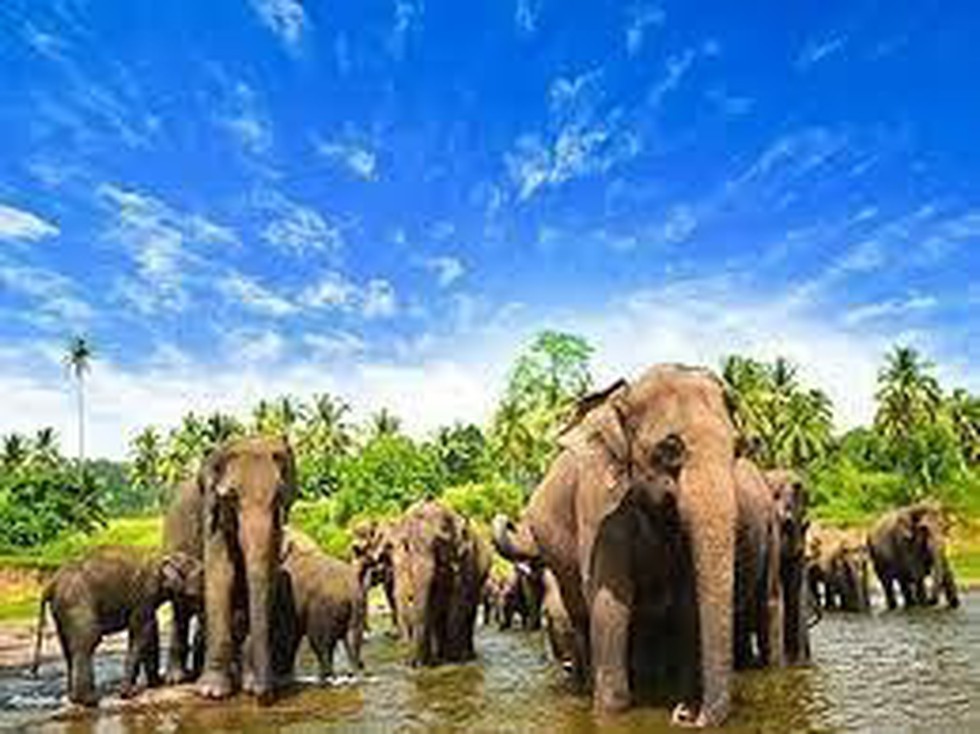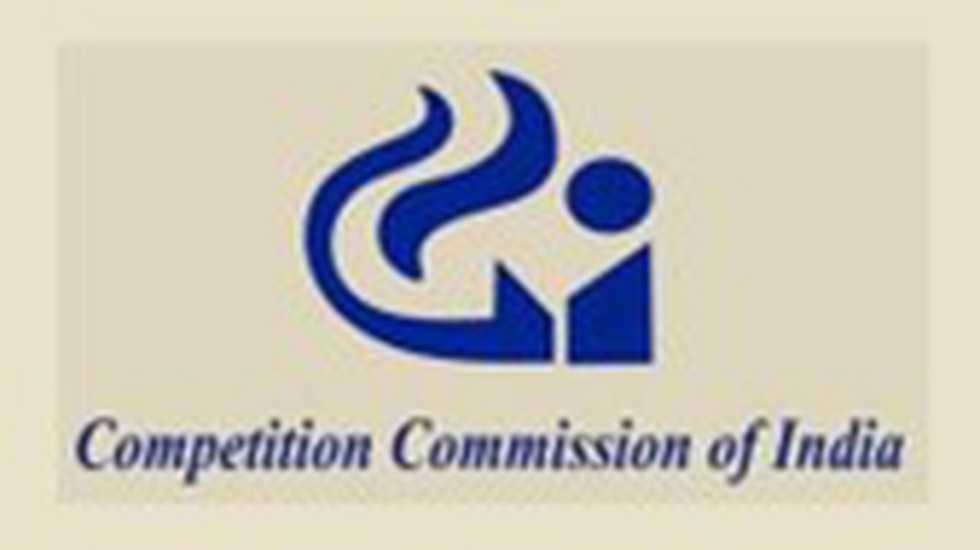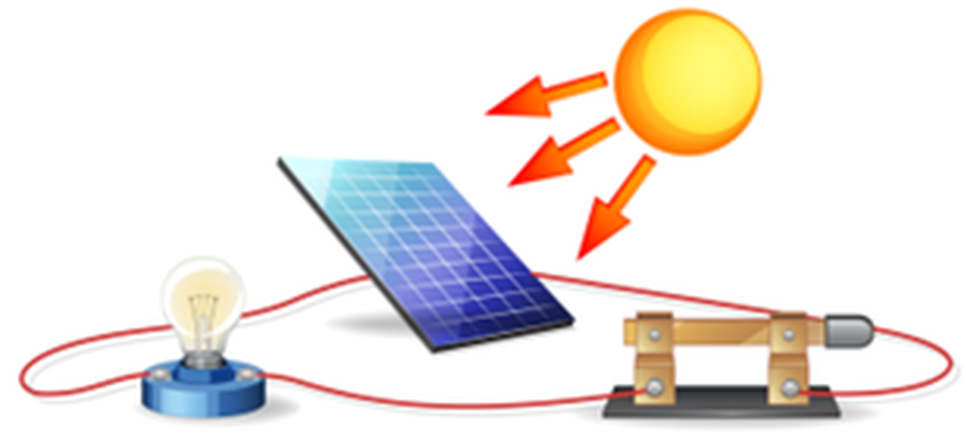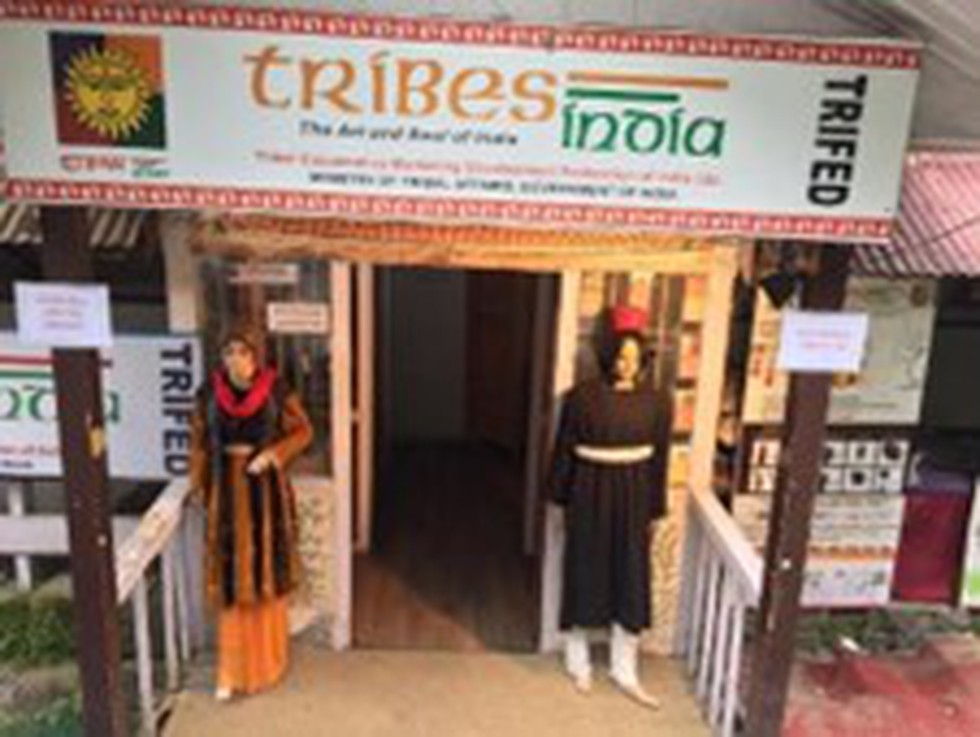
About Lemru Elephant reserve
- It is located in the Korba district of Chhattisgarh.
- It seeks to give elephants a permanent habitat while also minimising property damage and human-animal conflict.
- The reserve is part of an elephant corridor that connects Lemru (Korba), Badalkhol (Jashpur), Tamorpingla (Surguja).
- Elephant reserves in India- There are 33 notified Elephant Reserves (ERs) in the country, spread over 14 states.
What is Project Elephant?
- It was launched by the Government of India in 1992 as a Centrally Sponsored Scheme with following objectives:
- To protect elephants, their habitat & corridors
- To address issues of man-animal conflict
- Welfare of captive elephants
- Through the Project (being mainly implemented in 16 states, or UTs), the Ministry of Environment, Forest and Climate Change, Government of India, provides financial and technical support to major elephant range states in the country.

About leniency plus’ norms
- It is a new cartel detecting tool and sheds light on how the competition watchdog intends to operationalize it.
- The “Leniency Plus” regime was part of the Competition (Amendment) Act 2023
- Leniency Plus is a proactive antitrust enforcement strategy aimed at attracting leniency applications by encouraging companies already under investigation for one cartel to report other cartels unknown to the competition regulator.
- The benefit that would entail such disclosure is a reduction of penalty in the first cartel to the person disclosing the information, without prejudice to the company obtaining lesser penalty regarding the newly disclosed cartel.
- This “leniency plus” regime is already recognised in jurisdictions like the UK, US, Singapore, and Brazil.
Key facts about Competition Commission of India
- It is a statutory body of the Government of India, was established in March 2009 under the Competition Act, 2002.
- The goal of CCI is to create and sustain fair competition in the economy that will provide a ‘level playing field’ to the producers and make the markets work for the welfare of consumers.
- The priority of the Commission is to eliminate practices having adverse effects on competition, promote and sustain competition, protect the interests of consumers, and ensure freedom of trade in the markets of India.
- Mandate: To implement provisions of The Competition Act, 2002,which–
- prohibits anti-competitive agreements and abuse of dominant position by enterprises;
- regulates mergers and acquisitions (M&A), which can have an adverse effect on competition within India. Thus, deals beyond a certain threshold are required to get clearance from CCI.
- Composition:
- It has the composition of a quasi-judicial body, with one chairperson and six additional members.
- All members of the CCI are appointed by the Central Government.
- Headquarters: New Delhi.
What is Cartelisation?
- Cartels, which involve a group of businesses colluding to keep prices high, have been viewed by economists as a significant threat to the market economy.
- When businesses cooperate with each other rather than compete against each other, there could be many adverse consequences for consumers.
About Infantile Hypophosphatasia:
- It is a rare genetic disease in which the patient’s bones and teeth demineralise, making her fragile and prone to fractures.
- Symptom
- It may have no noticeable abnormalities at birth, but complications become apparent within the first six months of life.
- The initial problem may be the baby’s failure to gain weight and grow as expected, referred to as “failure to thrive.”
- Sometimes the skull bones fuse, called craniosynostosis, which can lead to a deformed head (brachycephaly).
- Affected infants have softened, weakened, and deformed bones consistent with rickets.
- Rickets is a general term for complications due to defective skeletal mineralization during growth with softening of bone and characteristic bowing deformities.
- Cause
- It is caused by mutations in the ALPL gene.
- This is the only gene that causes HPP. Genes provide instructions for making proteins that have an important function in the body.
- When a mutation occurs, the protein may be faulty, inefficient, or absent, as in HPP.
- There is no known cure for this disease.
About the Little Ice Age (LIA):
- It was one of the coldest periods of the past 10,000 years, a period of cooling that was particularly pronounced in the North Atlantic region.
- This cold spell, whose precise timeline scholars debate but which seems to have set in around 600 years ago, was responsible for crop failures, famines, and pandemics throughout Europe, resulting in misery and death for millions.
- The Little Ice Age followed the Mediaeval Warming Period (roughly 900–1300 CE) and preceded the present period of warming that began in the late 19th and early 20th centuries.
- Impact on climate:
- It is best known for its effects in Europe and the North Atlantic region.
- Alpine glaciers advanced far below their previous (and present) limits, obliterating farms, churches, and villages in Switzerland, France, and elsewhere.
- Frequent cold winters and cool, wet summers led to crop failures and famines over much of northern and central Europe. In addition, the North Atlantic cod fisheries declined as ocean temperatures fell in the 17th century.
Key findings of the study
- It showed significant variations in rainfall patterns during that age, challenging the conventional notion of a uniformly cold and dry climate with reduced monsoon rainfall during the LIA.
- It suggested that northward movement of the Inter Tropical Convergence Zone (ITCZ), positive temperature anomalies, increased sunspot numbers, and high solar activity could be driving climate change and increased South West Mansoon.
- They attributed the weakest phase of the Indian Summer Monsoon (ISM) across the Indian subcontinent during the LIA, in general, to the southward shift of the ITCZ, resulting from increased northward energy flux across the equator during a cold northern hemisphere.
- The high-resolution palaeoclimatic records generated in the present study could be helpful in developing paleoclimatic models for future climatic predictions and also for scientifically sound policy planning.
- Knowledge and understanding of climate change and Indian Summer Monsoon (ISM) variability during the Holocene could be of immense interest to strengthen the understanding of the present ISM-influenced climatic conditions, as well as of possible future climatic trends and projections.
About Operation Chakra-II:
- It was launched to fight against transnationally organised cyber-enabled financial crimes in India.
- For this, CBI has partnered with Microsoft and Amazon, as well as with national and international agencies, to combat and dismantle infrastructure of illegal call centres.
- The CBI is working with the Federal Bureau of Investigation (FBI) of the USA, the Cyber Crime Directorate and IFCACC of INTERPOL, the National Crime Agency (NCA) in the UK, Singapore Police Force and BKA of Germany to notify further leads.
Key facts about the CBI
- The Central Bureau of Investigation (CBI) is the premier investigative agency of India.
- The agency was established in 1963 by the Indian government as a result of the recommendation of the Santhanam Committee.
- CBI is not a statutory body. It derives its power to investigate from the Delhi Special Police Establishment Act, 1946.
- Control
- It operates under the jurisdiction of the Ministry of Personnel, Public Grievances and Pensions (which in turn operated under PMO).
- However, for investigation of offences under the Prevention of Corruption Act, CBI vests superintendence to the Central Vigilance Commission.
- Functions
- Initially, it was set up to investigate corruption in government departments and public sector undertakings.
- However, over the years, its jurisdiction has expanded to cover a wide range of cases, including economic offenses, cyber-crimes, organized crimes, and special crimes.

About Optoelectronics:
- Optoelectronics is the study and application of light-emitting or light-detecting devices.
- It is widely considered a sub-discipline of photonics. Photonics refers to the study and application of the physical science of light.
- Optoelectronics is a fast-emerging technology field that consists of applying electronic devices to sourcing, detection, and control of light.
- It is largely based on semiconductor materials. These exhibit suitable bandgap energies for absorbing near-infrared and visible light, and their electric conductivity (albeit not perfect) is also essential for such applications.
- Examples of optoelectronic devices consist of:
- Telecommunication laser
- Optical fibre
- Blue laser
- LED traffic lights
- Photodiodes
- Solar cells
- These devices are used in a wide variety of application areas, such as military services, automatic access control systems, telecommunications, medical equipment, and more.
- Optoelectronics should not be confused with electro-optics, as this field is a wider branch of physics that deals with the interaction of electric fields and light, without concern if an electronic device is involved or not.

About Bannerghatta National Park:
- Location: It is located near Bangalore, Karnataka, in the hills of the Anekal range.
- Founded in 1971, the park was given the status of a national park in 1974.
- In 2002, a portion of the park became a biological reserve, the Bannerghatta Biological Park. It is the first biological park in India to have a fenced, forested elephant sanctuary.
- In 2006, India's first butterfly enclosure was inaugurated at the park.
- River: Suvarnamukhi stream, the main source of water for the animals of the park, runs through the centre of the park.
- It also acts as an important corridor for the elephants migrating from the Eastern Ghats to the Western Ghats
- Vegetation: There are three types of vegetation that can be found: Dry Deciduous Scrub Forests, Southern Tropical Dry Deciduous Forests and Southern Tropical Moist Mixed Forests.
- Flora: Include Narcissus latifolia, Schleichera oleosa, Sandalwood, Neem, Tamarind, Bamboo, Eucalyptus etc.
- Fauna: Prime habitat for several species, including the endangered Asian Elephant, Indian gaur, Tiger, Sambar deer, Spotted deer, Leopard, Wild dog, Wild pig, Sloth bear, Common mongoose, Pangolin, Slender loris, Black-naped hare, etc.

About Laodracon carsticola:
- It is a newly discovered species of dragon lizard.
- It has been discovered to live only in the karstic massifs of Khammouan Province, central Laos.
- It possesses extraordinary camouflage abilities.
- It belongs to the mainland Asian subfamily Draconinae. This subfamily contains around 256 species that all live across Asia.
- The lizards within this family are typically omnivores, with the species spread across tree-living and ground-living habitats.
- Features:
- It measures around 101 millimetres (3.9 inches) long and has slate grey and black scales with blue coloration on their throats and blue/gray bellies.
- It can be told apart from other species by the noticeably swollen base of the tail.
- The body scales exhibit pronounced rough scales, which could serve to help it climb the steep limestone pinnacles on which it lives.
- The lizards are suspected to have a diet of ants.

About the Montreux Convention:
- It is an agreement concerning the Dardanelles Strait and the Bosporus Strait, also known as the Turkish straits or the Black Sea straits.
- The Turkish straits are the only maritime passage between the Black Sea and the Mediterranean Sea.
- According to the 1936 Montreux Convention Regarding the Regime of the Straits, often referred to simply as the Montreux Convention, Turkey has control over the Turkish Straits.
- In the event of a war, the pact gives Turkey the right to regulate the transit of naval warships and to block the straits for warships belonging to the countries involved in the conflict.
- Merchant vessels enjoy freedom of passage through the Turkish Straits, while passages of vessels of war are subject to some restrictions that vary depending on whether these vessels belong to the Black Sea littoral States or not.
- Besides some general restrictions applicable to all, vessels of war belonging to non-littoral States are subject to specific restrictions, such as those regarding maximum aggregate tonnage and duration of stay in the Black Sea.
- The principal provisions of the Convention ruling the passage of vessels of war are:
- Aircraft carriers, whether belonging to the littoral States or not, can in no way pass through the Turkish Straits.
- Only submarines belonging to littoral States can pass through the Turkish Straits for the purpose of rejoining their base in the Black Sea for the first time after their construction or purchase, or for the purpose of repair in dockyards outside the Black Sea.
- The total number and maximum aggregate tonnage of all foreign naval forces which may be in the course of passage through the Turkish Straits are limited to 9 and 15.000 tons respectively.
- The maximum aggregate tonnage which non-littoral States may have in the Black Sea is 45.000 tons.
- In this regard, the maximum aggregate tonnage of the vessels of war that one non-littoral State may have in the Black Sea is 30.000 tons.
- Vessels of war belonging to non-littoral States cannot stay more than 21 days in the Black Sea.
- Passages through the Turkish Straits are notified to Türkiye through diplomatic channels prior to intended passages.
- The notification time is 8 days for vessels of war belonging to littoral States, and 15 days for those of non-littoral States.
- Article 19 of the Convention:
- Vessels of war belonging to belligerent powers, whether they are Black Sea Powers or not, which have become separated from their bases, may return thereto.
- That means warships can return to their original bases through the passage, and Turkey cannot prevent it.
- For example, a Russian fleet registered in the Black Sea but currently located in the Mediterranean Sea is allowed to pass through the Bosporus and Dardanelles straits and return to its base.

About Tribal Cooperative Marketing Development Federation (TRIFED):
- It is a national-level organisation under the Ministry of Tribal Affairs, primarily engaged in the development and marketing of tribal handicrafts and natural products.
- It came into existence in 1987 and got registered under the Multi-State Cooperative Societies Act, 1984 (now the Multi-State Cooperative Societies Act, 2002).
- The main mandate of TRIFED is capability enhancement for Tribals, promotion of tribal products, and creation of marketing opportunities for the Tribals with a view to ensuring remunerative prices for their products and augmenting their income on a sustainable basis.
- Objectives:
- To develop the socio-economic welfare of the tribal community.
- To act as a facilitator and service provider for the tribal community to uplift production.
- Provide training to enhance artistic skills with modern technology to meet the requirements of the global market.
- To increase the promotion of tribal art and crafts for a stable livelihood.
- To identify target groups to monitor and evaluate the process and activities and provide input to the Ministry.
- Retail Marketing:
- TRIFED has been doing the retail marketing of tribal products under the brand name “TRIBES INDIA”.
- TRIFED promotes and creates a sustainable market through retail outlets, exhibitions such as Aadishilp, Aadichitra, and OCTAVE, international fairs, and e-marketing.
- TRIFED has also been entrusted by the Government of India to implement its proposed Minimum Support Price Scheme for Minor Forest Produce.
- Head Office: New Delhi
- It has a network of pan India Regional Offices and a chain of TRIBES INDIA Retail Outlets.



.png)

























































































































































.png)
.png)
.png)
.png)
.png)


.png)
.png)
.png)





.png)
.png)




.png)
.png)
.png)
.png)
.png)
.png)
.png)
.png)

.png)







.png)
.png)


.png)
.png)
.png)


.png)

.png)
.png)





.jpg)

.png)
.png)


.png)

.png)
.png)
.png)

.jpg)

.jpg)


.png)

.png)
.png)
.png)
.png)
.png)
.png)
.png)
.png)
.png)
.png)




.png)

.png)





.png)
.png)
.png)
.png)
.png)
.png)
.png)
.png)
.png)
.png)
.jpg)
.jpg)

.png)
.png)
.png)
.png)
.png)
.png)
.png)
.png)
.png)
.png)
.png)
.png)
.png)
.png)
.png)
.png)
.png)
.png)
.png)
.png)
.png)
.png)



.png)
.png)

.jpg)
.jpg)


.jpg)
.jpg)
.jpg)
.jpg)
.jpg)

.jpg)








.jpg)
.jpg)
.jpg)
.jpg)
.jpg)

















.jpg)
.jpg)







.jpg)


















.jpg)
.jpg)






























































































.jpg)
.jpg)


























.jpg)

.jpg)










.jpg)








.jpg)




.jpg)










.jpg)


















.jpg)












































.jpg)














.jpg)
.jpg)
.jpg)





.jpg)

.jpg)
.jpg)





































































.jpg)


































.jpg)
.jpg)
















































.jpg)












.jpg)


.jpg)




.jpg)
.jpg)
.jpg)

.jpg)
.jpg)
.jpg)
.jpg)

.jpg)
.jpg)
.jpg)

.jpg)
.jpg)
.jpg)
.jpg)
.jpg)
.jpg)
.jpg)
.jpg)

.jpg)


.jpg)
.jpg)
.jpg)
.jpg)
.jpg)
.jpg)
.jpg)
.jpg)
.jpg)
.jpg)











.jpg)
.jpg)





.jpg)
.jpg)
.jpg)
























.jpg)
























.jpg)









.jpg)
.jpg)







.jpg)
.jpg)









































.jpg)
.jpg)
.jpg)
.jpg)
.jpg)

.jpg)
.jpg)
.jpg)
.jpg)
.jpg)


.jpg)
.jpg)
.jpg)
.jpg)
.jpg)

.jpg)
.jpg)
.jpg)
.jpg)
.jpg)
.jpg)
.jpg)
.jpg)
.jpg)
.jpg)
.png)

.png)
.png)

.png)
.png)
.png)
.png)


.jpg)
.jpg)

.jpg)
.jpg)
.jpg)

.png)
.png)
.png)
.png)
.png)
.png)
.png)

.png)
.png)
.png)
.png)
.png)
.png)
.png)
.png)
.png)
.png)





































































-min.png)



.png)




.png)








































